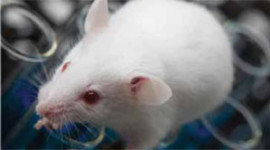 “Neurotoxins in Your Thanksgiving Meal,” By Angela Logomasini, Ph.D.
“Neurotoxins in Your Thanksgiving Meal,” By Angela Logomasini, Ph.D.
Should you “go organic” for Thanksgiving, buying only “chemical free” foods? That’s the suggestion of some “health advocates” who say it’s in your best interest to avoid “dangerous” synthetic chemicals, particularly pesticides. Yet not only is it impossible to avoid chemicals, it’s simply not necessary for public health purposes.
All physical things are made of chemicals, so yes, there are chemicals in your turkey, potatoes, and apple pie. Moreover, all food is already technically “organic,” since plants and animals are by definition “organic” or carbon-based. The real question is: Are some chemicals in your food dangerous?
Chemicals in your food certainly can be dangerous, whether they are manmade or naturally occurring. Fortunately, federal regulators and food companies track and regulate levels of both natural and synthetic chemicals that appear in food to ensure levels remain negligible.
The American Council on Science and Health (ACSH) has done a fantastic job putting the issue in perspective with their Holiday Dinner Menu. It features many naturally forming “rodent carcinogens” (chemicals that cause tumors in rodents exposed to high amounts) found in a traditional American turkey-day meal. Many of these chemicals are natural pesticides that the plants produce to fight off insects, and they are both more potent and more common than man-made pesticides.
ACSH’s menu points out: “The human dietary intake of nature’s pesticides is about 10,000 times higher than human intake of synthetic pesticides that are rodent carcinogens.” Yet the levels of these are unlikely to pose much risk. Manmade pesticides—because they appear at far lower levels—are even less likely to pose risks.
While ACSH’s menu focuses on rodent carcinogens, there are also other chemicals or toxins commonly found in food. For example, your pumpkin pie and butternut squash might have traces of toxins known as cucurbitacins, which may also have health benefits, but at high levels in food can make you sick. Your lima beans naturally contain harmless levels of cyanide, and there may be inconsequential traces of arsenic in your carrots as well—all thanks to Mother Nature.
A1990 seminal article by scientist Bruce Ames and his colleagues details the potency and impact of such naturally occurring chemicals in food versus synthetic chemicals found in food. There’s no competition: Mother Nature’s chemicals are far stronger and more widespread by a long shot, but risks still remain manageable.
Disregarding this reality, media hype about conventional produce and synthetic pesticides suggests they pose serious health risks. Much of this hype appears politically driven. For example, after a Trump administration decision rejecting an environmental activist petition to ban the pesticide known as chlorpyrifos, media attacks exploded. They absurdly allege that the pesticide is a dangerous “neurotoxin” similar to chemical warfare agents such as sarin gas and that it’s use could actually lead to brain damage.
It is true that chlorpyrifos is a neurotoxin. It inhibits the effectiveness of an enzyme called cholinesterase, which is necessary for proper functioning of the nervous system. In very low, dilute doses, the impact of chlorpyrifos on insects’ nervous systems is enough to kill them. In humans, exposure must reach relatively high and concentrated levels for a period of time before significant health effects can occur. Federal pesticide regulation keeps human exposures low enough to avoid health effects in people.
Human exposure to chlorpyrifos is, in fact, quite insignificant. According to U.S. Department of Agriculture surveys, only very tiny traces of chlorpyrifos show up on produce. For example, their 2015 survey found that out of 10,158 fruits and vegetable samples, only 84—less than one percent—had traces of chlorpyrifos, which means more than 99 percent of the produce tested had no measurable levels of chlorpyrifos. For the few samples that had residues, the highest measurement on any sample was 0.38 parts per million (ppm), but most residues were far lower. FDA lists the highest concentrations found for each fruit and vegetable, the average of which is just 0.06 ppm.
To grasp how incredibly insignificant chlorpyrifos exposure is, compare it to levels of natural neurotoxins found in just one of the most popular Thanksgiving dishes: mashed potatoes. Potatoes naturally contain neurotoxins known as glycoalkaloids. The most prevalent glycoalkaloids are solanine and chaconine, and they are basically naturally occurring pesticides that protect the potatoes from pests. Glycoalkaloids are also found in other foods—including apples, cherries, and blueberries used to make holiday pies, as well as tomatoes and peppers in your salad—but at very low levels.
Just like chlorpyrifos, these chemicals inhibit cholinesterase, but levels are usually too low to have any health impacts. Potatoes containing under 200-250 ppm of glycoalkaloids are generally considered safe. Potatoes on the market in the United States naturally contain an estimated 20-150 ppm (average of 80 ppm) of glycoalkaloids. If you store potatoes in the light, both glycoalkaloids along with chlorophyll increase and the potatoes take on a greenish hue and begin to sprout. You should trash such potatoes because the glycoalkaloids can eventually exceed safe levels.
So now, let’s go back to compare the average level of glycoalkaloids found in healthy potatoes to levels of chlorpyrifos residue on vegetables and fruits. For potatoes it’s 80 ppm, while the average high for the small percentage of fruits and veggies that had chlorpyrifos residues was just 0.06 ppm. Remember also that more than 99 percent of 2015 USDA-sampled produce contained no chlorpyrifos residues.
Yet groups like the Natural Resources Defense Council have suggested such inconsequential traces of chlorpyrifos in your holiday meal could be dangerous. Would you take them seriously if they said the same about your mashed potatoes? Probably not, but it’s clear that your Thanksgiving potatoes likely have neurotoxins that are multitudes higher than trace levels of chlorpyrifos found on all of the fruits and veggies on your plate combined.
That said, it remains true that food contamination is a real safety concern, but most food risks come from, ironically, the “organic” part of the universe: from living creatures such as E. coli or Salmonella. Such pathogens contaminate food as a result of improper preparation (such as under cooking certain meats), cross contamination of pathogens found in raw meat to other foods, improper storage, or simply keeping food to long. Fortunately, we do have some control over those most dangerous risks.
Now you know there’s no need to fret about trace chemicals in your holiday meals! So relax and enjoy a fear-free and healthy Thanksgiving dinner.
This article first appeared on HuffPost.


